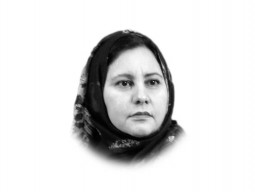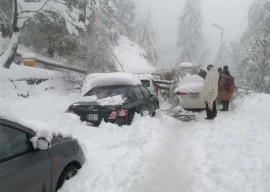
It’s been 75 years since the world saw one of the lowest points in humanity. The date was August 6, 1945. The city, Hiroshima. Nearly 200,000 were killed — and for those who survived, it was hell on earth for as long as they lived. Three days later hell returned for a second round in Nagasaki. Fortunately, never again has any country used this inhuman device of destruction — though there have been close calls. Today, we know the tragedy and the inhumanity. The very thought of a nuclear war causes a deep sense of worry, anxiety and anger. But it wasn’t always like this.
For nearly a year after the bombing, few in the United States and elsewhere knew the real horrors. There were some occasional stories but the public was still basking in the light of a recently won war. They still believed their values were that of humanity, kindness and decency. All they were told by the tightly controlled news was that the atomic bomb was just a more powerful version of a conventional bomb. With US forces in full control of who came in and out of defeated Japan, and extremely tough restrictions on Japanese journalists, there was almost no awareness of the human suffering created by the atomic bomb. If anything, it was a source of pride — a celebration of exceptional scientific creativity. A year later, on August 31, 1946, the US façade of highest moral standing was broken forever. The New Yorker devoted its entire issue to a single story. The 30,000-word story started with a clarity that demanded attention of the reader, and held on till the last word. “At exactly 15 minutes past eight in the morning, on August 6, 1945, Japanese time, at the moment when the atomic bomb flashed above Hiroshima, Miss Toshiko Sasaki, a clerk in the personnel department of the East Asia Tin Works, had just sat down at her place in the plant office and was turning her head to speak to the girl at the next desk.”
The journalist who wrote this age-defining piece was John Hersey.
Hersey was a gifted writer, someone who had already gotten a Pulitzer Prize for his novel, A Bell for Adano, in 1945. But it was this story about six survivors of the worst weapon of mass destruction that made him among the most remarkable journalists of his generation. Hersey’s essay told Americans, and the world, of the real cost in human suffering, agony and pain. It forced Americans to hold a mirror to see themselves, and their government. It changed public opinion, inspired a generation of activists against atomic weapons, and perhaps made it impossible for anyone to use the weapon again.
Hersey’s essay was soon published as a book and translated in dozens of languages. I got my copy from the bookstore at the Hiroshima museum last year. The bookstore was not far from the final exhibition at the museum, with pictures of people who undermined the global efforts against non-proliferation, including of a famous Pakistani nuclear scientist addressing the nation and taking the blame for proliferation.
Hersey’s life and work is told in detail by Lesley MM Blume in her book, Fallout. She tells in crisp detail how Hersey’s journalism embarrassed the military establishment. He was labelled a traitor and unpatriotic by those in the business of giving patriotism certificates. But eventually the truth won.
Reading Hersey’s words again and Blume’s book made me wonder where our values may be. What do we do with journalists who expose our excesses? How quickly do we call them traitors? In the end, we all are better off because of Hersey’s courage. We need to support the Hersey’s among our midst.
Published in The Express Tribune, September 29th, 2020.
Like Opinion & Editorial on Facebook, follow @ETOpEd on Twitter to receive all updates on all our daily pieces.




















COMMENTS
Comments are moderated and generally will be posted if they are on-topic and not abusive.
For more information, please see our Comments FAQ